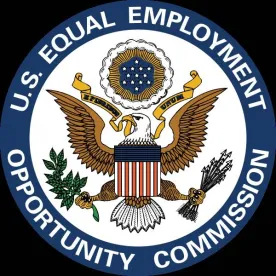The Equal Employment Opportunity Commission’s (EEOC) Fiscal Year (FY) 2020 Annual Performance Report (APR) shows a substantial decrease in the number of lawsuits filed by the agency. However, the APR shows a dramatic increase in the amount of monetary recoveries by the EEOC in litigation compared to FY 2019.
The EEOC notes that it continues to focus on efficiently processing new inquiries and claims and reducing its backlog of pending private sector charges. The agency also stresses its ongoing prioritization of education and outreach in the private sector. The report covers the period October 1, 2019, through September 30, 2020.
In total, the EEOC recovered $333.2 million in pre-litigation relief for those who work in the private sector and state and local government (down 4% from 2019), and an additional $106 million through its litigation efforts, nearly tripling its 2019 litigation total of $39.1 million. The EEOC also secured $96.2 million for federal employees and applicants through its federal sector process (a 4% decrease from 2019). The EEOC’s total claimed monetary achievements for FY 2020 was $535.4 million, a 10% increase from 2019.
Litigation Recoveries Up, Filings Down
According to the APR, the EEOC resolved 165 merit lawsuits in FY 2020, for a total monetary recovery of approximately $106 million, up dramatically from the $39.1 million recovered in FY 2019. This is the highest litigation recovery amount since 2004. Approximately 70% of the litigation recovery involved claims under Title VII of the Civil Rights Act (accounting for $72.6 million), with the remaining 30% split nearly evenly between claims under the Americans with Disabilities Act (ADA) and the Age Discrimination in Employment Act. The EEOC estimates that 25,925 individuals received monetary relief as a direct result of these 165 merit lawsuits.
The agency filed 93 merit lawsuits in FY 2020, a decrease from 144 in FY 2019, and fewer than half as many merit lawsuits filed FY 2018 (199). For FY 2010-2019, the EEOC filed an average of 165 merit lawsuits a year. In FY 2020, the top bases on which the EEOC sued were:
-
Sex (37)
-
Disability (29)
-
Retaliation (26)
-
Race (13)
-
Age (7)
-
Religion (5)
-
National Origin (4)
According to the APR, 69 of the 93 merit lawsuits were filed on behalf of individuals, 12 were non-systemic suits with multiple victims, and 13 were systemic suits. By way of contrast, in FY 2019, 100 of the 144 merit lawsuits were filed on behalf of individuals, 27 were non-systemic suits with multiple victims, and 17 were systemic suits. In FY 2019 and FY 2020, the systemic suits included: ADA policy claims; hiring claims based on race and sex; harassment based on race, national origin, and sex; equal pay claims; and claims involving the unequal pregnancy accommodation. At the end of FY 2020, the EEOC reported 201 cases on its active district court docket, of which 31 (15.4%) were non-systemic multiple victim cases and 59 (29.3%) involved challenges to systemic discrimination. These numbers were down from FY 2019, when the EEOC reported 275 cases on its active district court docket, of which 59 (21.5%) were non-systemic multiple victim cases and 59 (21.5%) involved challenges to systemic discrimination.
That the EEOC filed far fewer lawsuits in FY 2020 may be a subject of conversation between the EEOC’s three Republican Commissioners (who want to rein in decision making over litigation) and its two Democratic Commissioners (who prefer the General Counsel make most litigation decisions). For more than 20 years, the EEOC’s General Counsel had sole authority to make litigation decisions in a wide scope of cases. On March 10, 2020, the EEOC modified its Strategic Enforcement Plan, narrowing the scope of cases in which the General Counsel would make litigation decisions and increasing the scope of cases requiring litigation approval by the EEOC’s Commissioners. On January 13, 2021, the EEOC’s three Republican Commissioners voted to require all proposed litigation be submitted to the Commissioners for a five-business-day review. The EEOC’s two Democratic Commissioners voted against the new requirements.
Focus on Harassment Claims, Recoveries
As in 2018 and 2019, the APR emphasized the high priority the EEOC has put on combatting workplace harassment. In FY 2020, the EEOC filed 33 lawsuits challenging workplace harassment (down from 48 in FY 2019), of which 24 raised claims of hostile work environment based on sex and 8 raised claims of hostile work environment based on race. Of these 33 lawsuits, 12 were class actions and one was a systemic case.
In FY 2020, the EEOC successfully resolved 62 harassment suits (14 more than in FY 2019, and 24 more than in FY 2018). According to the EEOC, it recovered about $84.4 million for 902 victims through its litigation program. The $84.4 million for harassment victims appears to be overstated in the APR. Of the EEOC’s $106 million in litigation recoveries, it can be readily determined that at least $36 million were for three lawsuits unrelated to harassment, and the EEOC recovered no more (and probably significantly less) than $70 million for harassment victims. In any event, the EEOC appears to have recovered tens of millions of dollars for harassment cases, a dramatic increase from FY 2019, when it recovered $10.7 million for 207 victims. The EEOC highlighted several six- and seven-figure settlements that provide further insights into its areas of focus:
-
$2.65 million in damages for 26 Hispanic employees where the EEOC alleged a former owner and manager of a luxury resort subjected the employees to discrimination and harassment based on national origin, then retaliated against them by implementing an English-only policy, as well as demoting them and constructively discharging and actually discharging many of them.
-
$1.25 million in damages for 8 African American employees who worked for an electrical contractor where the EEOC alleged coworkers engaged in racially offensive conduct, including racist remarks and taunting, racist graffiti, threats of lynching, and display of a noose.
-
$690,000 in damages for 40 female employees where the EEOC alleged the women were subjected to sex-based comments, unwelcome touching, propositions, and offers of addition overtime in exchange for sexual favors by a male supervisor.
-
$350,000 in damages for an employee of Afghani descent where the EEOC alleged an employer subjected an employee to discriminatory harassment, a hostile workplace environment, and, ultimately, constructive discharge.
-
$321,000 in damages for a female employee where the EEOC alleged an airline permitted a male pilot to sexually harass a female subordinate for years and granted the pilot long-term disability leave and retirement with full benefits, even after the pilot was arrested by the FBI for cyber stalking.
In FY 2020, the EEOC also recorded several seven- and eight-figure settlements in cases involving disability discrimination, age discrimination, and gender and race discrimination. These cases included:
-
$20 million for 12,000 employees and job applicants where the EEOC alleged a national retail corporation discriminated against a class of female job applicants when it relied on various physical ability tests that had a disparate impact on woman.
-
$20.5 million for 21 employees where the EEOC alleged a provider and seller of insurance and financial products discriminated against employees based on race, color, sex, and national origin by subjecting the employees to unlawful harassment, discriminatory compensation, retaliation, demotions, and discharge.
-
$10 million for 45 employees where the EEOC alleged a space engineering company laid off or forced older workers to retire.
-
$6 million for 10,000 employees and applicants where EEOC alleged a retailer relied on criminal background checks that were unrelated to the work and resulted in a disparate impact based on race.
Pre-Litigation Enforcement
The EEOC’s monetary recoveries for complainants in private sector and state and local government workplaces came primarily from pre-litigation early mediation, settlement, or conciliation. According to the APR, in FY 2020, the EEOC successfully resolved 6,272 of the 9,036 mediations conducted, resulting in more than $156.6 million in benefits to charging parties. This was slightly down from FY 2019, when the EEOC successfully resolved 6,394 of the 8,899 mediations conducted, resulting in more than $159.6 million in benefits to charging parties. Nonetheless, as a result of the EEOC’s continued efforts to increase employer acceptance of mediation through various marketing and education campaigns, the EEOC achieved an increased respondent participation rate of 31.7%, up from 30.7% in FY 2019 and 27.6% in FY 2018. According to the APR, the success rate for conciliation of systemic charges was 64%, up from 56% in FY 2019 and 46% in FY 2018.
Additionally, in FY 2020, the EEOC implemented an ADR Pilot program that expanded the categories of charges available for mediation and the opportunities for taking advantage of mediation throughout the administrative process.
Education and Innovation
The APR stresses the EEOC’s ongoing prioritization of education and outreach to the private sector as an effective means of reducing discrimination in the workplace.
According to the APR, the EEOC quickly adapted to the challenges of the COVID-19 pandemic and provided more than 2,690 virtual outreach events and trainings that reached nearly 300,000 people. The APR also describes the EEOC’s ongoing efforts to develop and deliver digital services to make it easier and more efficient for employees and employers to access the EEOC’s services. The EEOC’s technological advances, including the Public Portal, Respondent Portal, and the entire Digital Charge System (DCS), improved private sector efficiency and customer service, while requiring fewer resources. These services include an online intake system that allows potential charging parties to submit pre-charge inquiries for review and portals for respondents and charging parties to submit documents and briefs to the EEOC. Using these resources, approximately 122,775 individuals initiated inquiries through the DCS online intake system, of which 30,294 were formalized into charges of discrimination. (Overall, for FY 2020, the EEOC reported almost 470,000 calls to toll-free numbers, more than 37,300 emails, more than 187,000 inquiries in field offices, and 67,448 new charges.)
Looking Forward
Based on the APR, the EEOC appears to be particularly focused on combating hostile workplace environment claims, with a strong preference for alternative dispute resolutions, as opposed to lawsuits. The APR stressed the EEOC will continue to focus on reducing its inventory of pending charges to free up resources for meritorious claims. In addition to the various technology initiatives discussed above, the EEOC will continue to expand its data analytics capabilities to better identify vulnerable populations, so field offices can allocate resources more effectively. Finally, the EEOC will continue to rely heavily on education initiatives, including expanded use of social media, to combat discrimination in the workplace.




 />i
/>i
